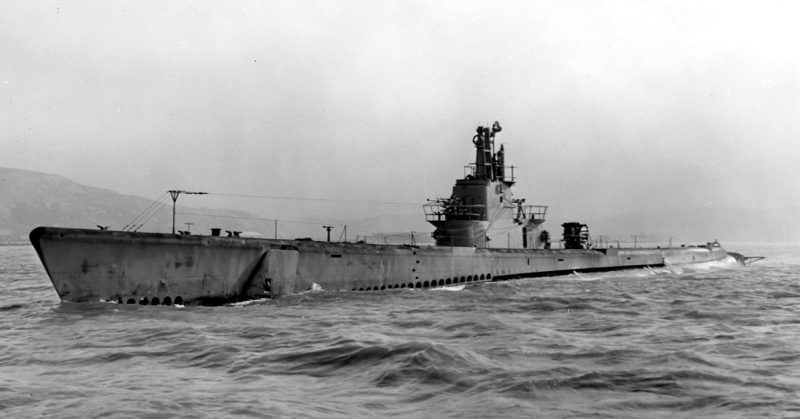Near the end of World War II, many of Japan’s remaining war planes and ships were kept in port as they waited for the expected Allied invasion. In July 1945, Allied battleships began firing on coastal cities of Japan in hopes of drawing those assets out into battle, without much success. A week before those attacks, a US submarine with a rocket launcher started a campaign that showed the future of naval warfare. It was also the only Allied ground combat on Japan’s home islands.
During WWII, submarines were still using deck guns, typically between three and five-inch caliber guns. Those guns were used to fire the fatal blows on unarmed merchant ships or smaller ships that were able to avoid torpedoes. Sometimes they were turned on coastal targets as the Japanese did early in the war on the coasts of California and Australia. Deck guns were problematic in that they did not cause much damage and the submarine was vulnerable to attacks while surfaced.
The German Kriegsmarine tested submarine artillery that was able to be fired underwater in 1942. They abandoned the concept after finding it to be impractical. There were rumors that the Nazis had developed a way to launch V-2 missiles from their submarines and the rumors were taken seriously enough by the Americans to lead to an intensive hunt for submarines at the close of WWII.
The US Navy had their own solution to ground attacks from submarines: take a Mark 51 rocket launcher from the deck of an LSM landing ship and strap it to the deck of a submarine. The Mark 51 was twelve twin-stabilized 127mm rockets mounted on a launch rack which could not be fired while submerged. Maximum range of the rockets was three miles. The submarine had to point the direction they were firing since the launcher could not be turned. But, once the submarine surfaced, all twelve rockets could be ripple fired in five seconds.
Eugene Fluckey was the captain of the Gato-class submarine USS Barb who volunteered his ship for the experimental weapon in 1945. The Navy was testing the launcher as an anti-kamikaze defense, but Fluckey convinced them to mount it on his ship in time for his patrol. This made the Barb the only submarine which could fire rockets in the battle.
The Barb was one of the most effective US submarines in WWII. Conservatively, the Barb is credited with sinking 17 ships with a total of 97,000 tons of shipping. Other estimates credit the Barb with considerably higher numbers.
In January 1945, Fluckey was on his fourth patrol as the Barb’s commander. He snuck into the shallow waters off Namakwan Harbor off the coast of China and torpedoed six boats before escaping. Fluckey was awarded the Medal of Honor for this action. On his fifth patrol, he found it much harder to find shipping targets, so he was very interested in being able to hit targets on land.
On June 8, 1945, the Barb left Midway and sailed to Japan with 100 rockets. It arrived on June 20. At 2:30 am on June 22, it surfaced near Shari on northeastern Hokkaido Island. It fired twelve rockets into the community while they slept. Then Fluckey sailed north to Southern Sakhalin Island which was known as the prefecture of Karafuto at the time. (Sakhalin is under Russian administration now.)
During the next month, the Barb fired 68 rockets into Shikuka, Shoritori and Kashisho. Most of the attacks took place late at night at nearly the maximum range. At Kaihyo To, Shinertori, and Chiri, the Barb fired her four-inch deck guns. The targets were civilian industrial sites, including a cannery, seal rookery, lumber yard, paper factory, and several small shipyards. They also targeted a military radio, radar and lighthouse stations. Japanese planes began hunting the Barb, so Fluckey attacked the Shikuka military airfield with rockets.
The most famous attack by the Barb didn’t use either the rockets or the guns. Fluckey dispatched a landing party to blow up a passing train. On July 23, at midnight, the Barb moved to within a kilometer of the shore, and the landing party paddled to the beach. They used the charges intended to scuttle the ship in an emergency and rigged them to blow as a train passed over them, The National Interest reported.
The landing party was still rowing to the submarine when a train triggered the bomb. All sixteen train cars derailed, killing 150 passengers. The landing party successfully completed the only US ground operation on Japan’s home islands in WWII. The Barb continued attacking the coastline until July 26 when it returned safely to base on August 2.
